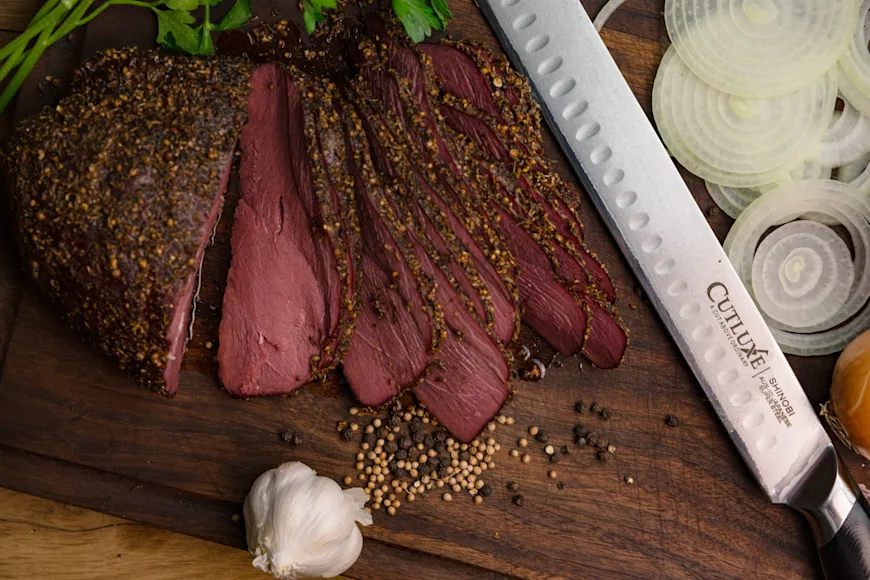Traditional pastrami owes it roots to pre-refrigeration Romania, when the cured and seasoned then smoked meat was more so for purposes of preservation versus flavor. Goose
was a popular choice in its country of origin, but when immigrants landed in New York in the late 1800s, beef was both more readily available and affordable. Today, beef brisket is a popular choice for pastrami, though in the place where it first made an appearance in the United States (New York), beef navel remains the primary choice.
For hunters with an extra roast or two, venison pastrami is a great option for “trying something new,” especially if that something new is an alternative to store-bought additive-rich lunch meat. Pastrami has had its social status elevated since its inclusion in the ever-popular and fashionable charcuteri board, but while it seem fancy, pastrami is really nothing complicated. The ingredients for making venison pastrami are simple and so is the process, though I feel this cured meat is taken to the next level when venison is used. If you got a roast, I suggest giving venison pastrami a try.
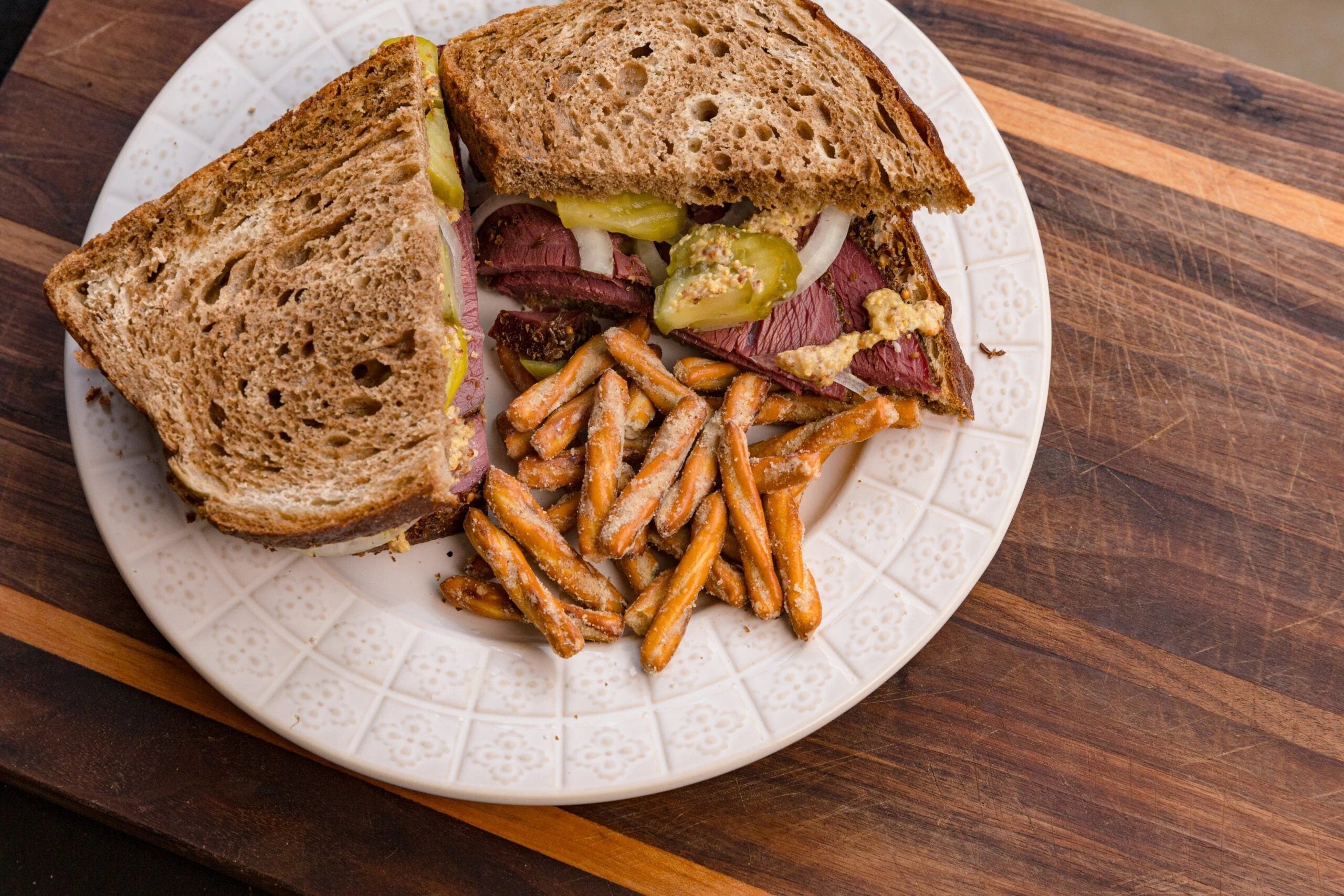
Choose a good rye that will compliment your homemade venison pastrami. If the bread detracts from the flavor in any way, consider tossing bread and eating without bread. Jack Hennessy
How Venison Pastrami Is Made
A cut of meat (in this case, venison) is either coated in both salt and InstaCure (pink curing salt #1) or soaked in a brine containing both, along with other spices potentially. InstaCure contains synthetic nitrites and is often used in meats liked corned beef, bacon, and salami. Curing with nitrites extends the shelf life but also turns the meat pink and creates a distinct “cured” flavor. You can indeed cure pastrami with solely salt, but you will lose both color and some flavor.
After the curing process—a timeframe that will vary depending on the size and cut of meat—the meat is highly seasoned with aromatic spices and herbs before being smoked low and slow for an extended period of time. A lot of recipe call for steaming the meat to finish it. From there, pastrami can be served either warm or cold with or without bread and other toppings.
Venison Pastrami Recipe
Ingredients
For the Venison Pastrami
One venison roast, approximately 2-1/2 to 3 pounds, trimmed of silver skin
1.8% of total weight in kosher salt
.25% of total weight in InstaCure (pink curing salt #1)
For the Venison Pastrami Rub
Maple syrup
1 1/2 teaspoons whole black peppercorns
1 teaspoon caraway seeds
1 teaspoon coriander seeds
1 teaspoons dry thyme leaves
1/2 teaspoon mustard seeds
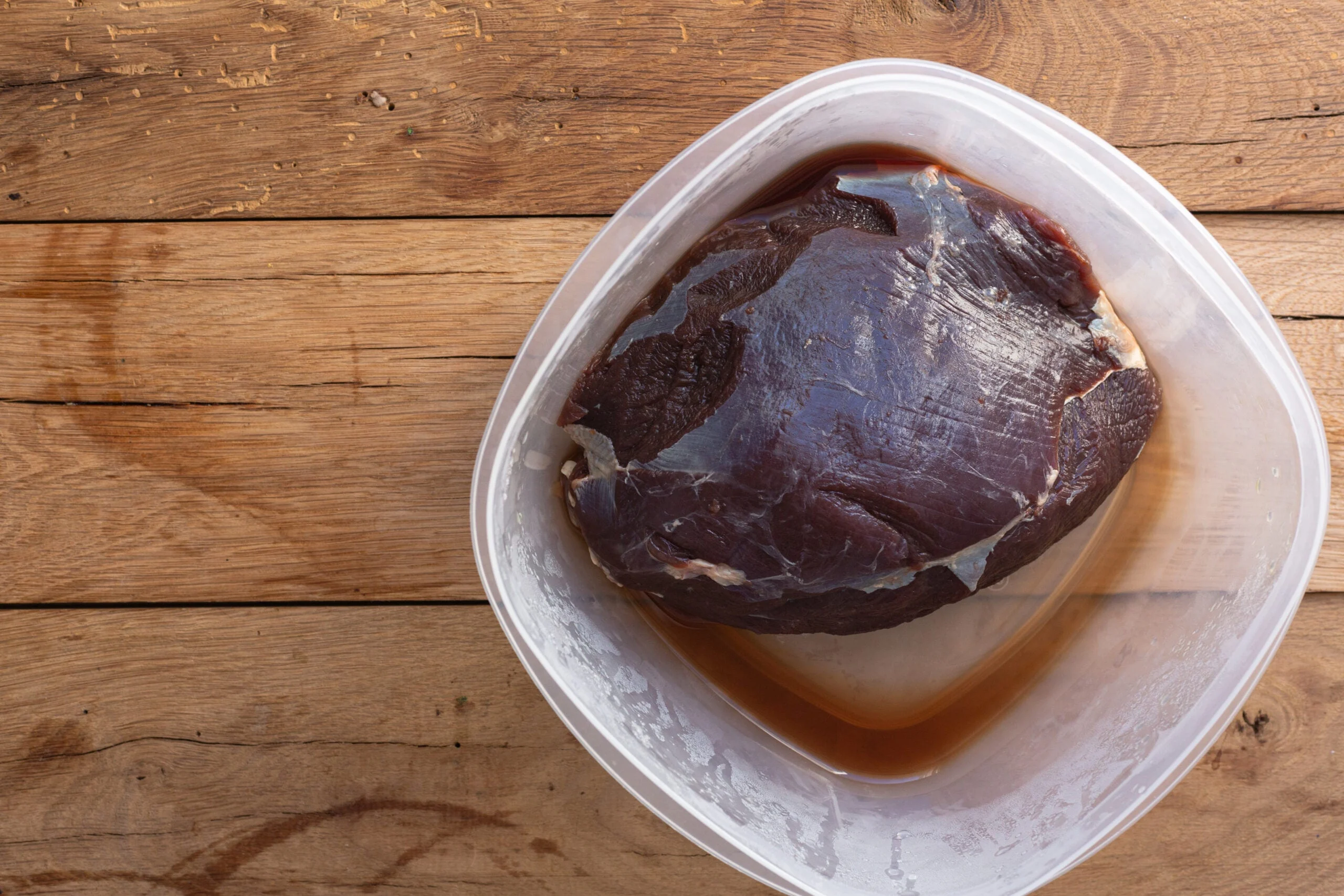
Pink curing salt will take several days to penetrate to the core of a trimmed roast. Jack Hennessy
Directions
Trim the roast of any silver skin and fascia. Weigh the roast and convert to grams for purposes of determining the necessary quantity of kosher salt and pink curing salt #1 you’ll need. For example, a 2-1/2-pound roast equals 1,134 grams, meaning you should include 20.4 grams of kosher salt and 2.8 grams of InstaCure in the initial mix. I recommend using a dry goods scale for measuring properly.
Mix the appropriate amount of kosher salt and InstaCure together, then rub onto all sides of the roast. Place the roast in a non-reactive bowl (plastic or glass, for example) and cover. Cure for 7-10 days. For smaller roasts, you can cure for as little as 5 days.
When done curing, lightly rinse off roasts under cold water and pat dry. Lightly glaze with maple syrup. Blast rub spices in a spice grinder enough to break down but also leave a bit of texture in the rub. Apply the rub to all sides of the roast.
Smoke the roast for 2 hours and 40 minutes at 180 degrees F. (I recommend a mix of cherry and mesquite for smoking.) Turn up the heat to 225 F, then smoke for 20 minutes. Ideally, you want to pull the roast when the internal temp reads 150 F.
Allow the roast to rest for 10 minutes prior to carving and serving.
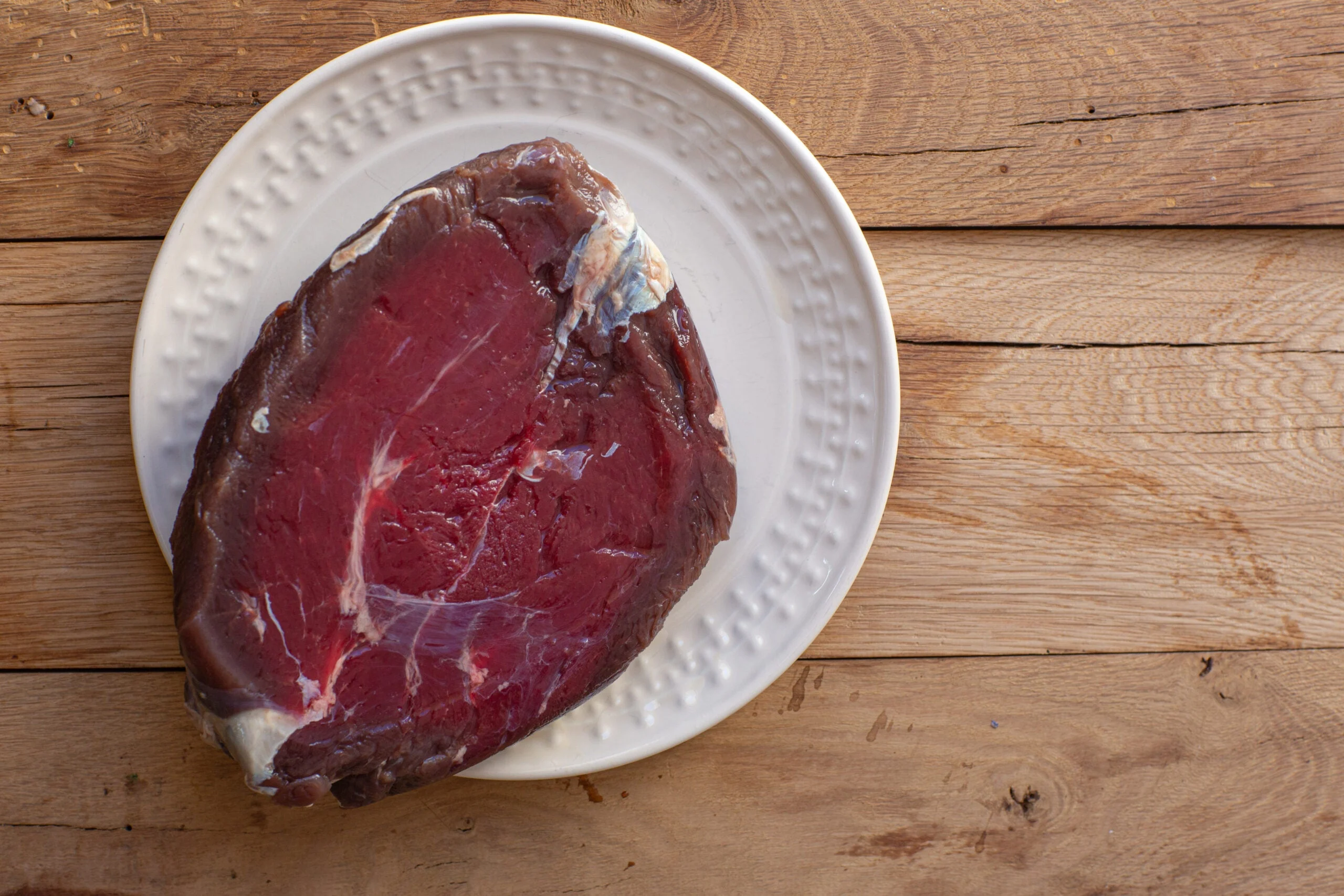
Any meat not exposed to oxygen will show the change in color. Jack Hennessy
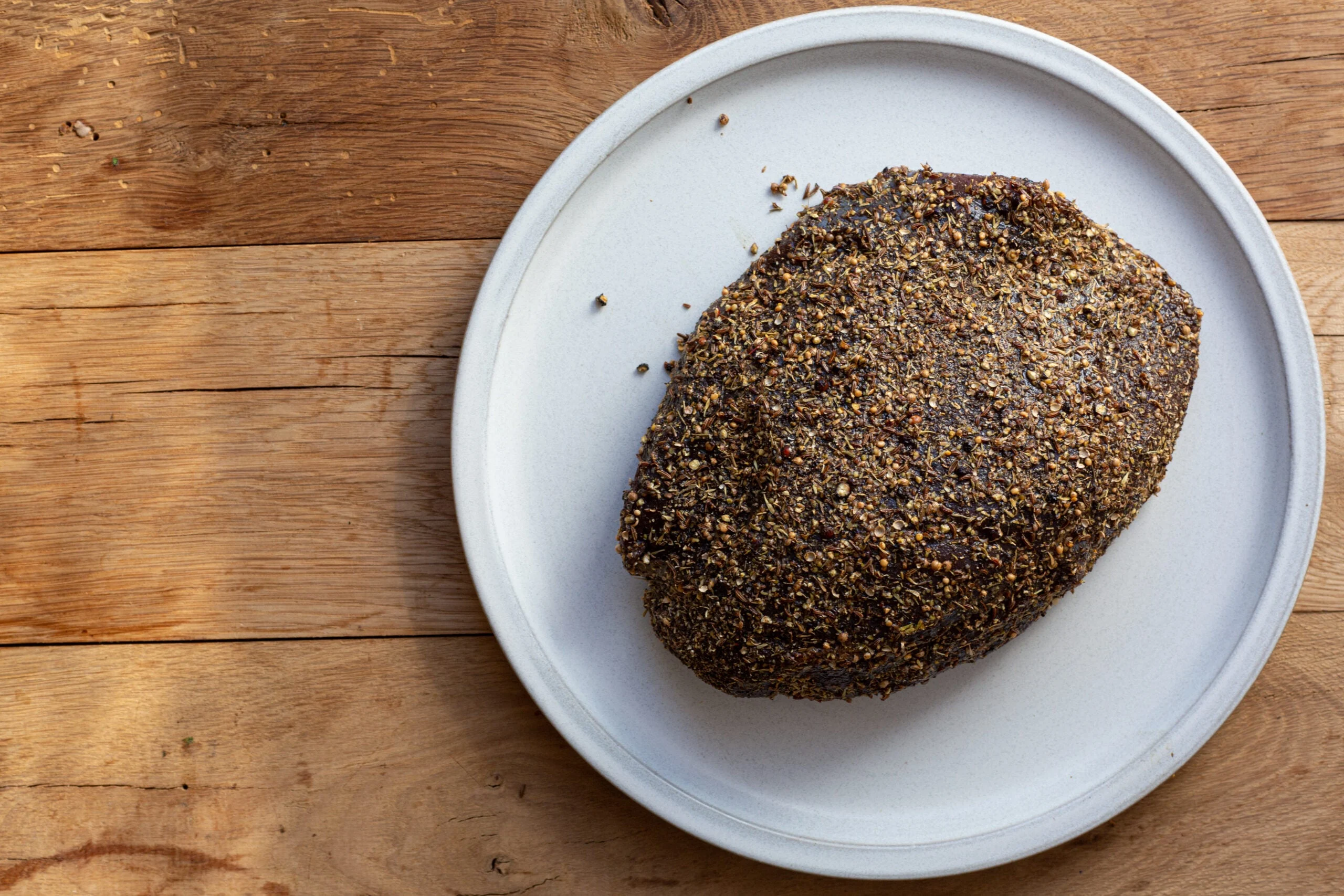
Spices should be ground but still have a bit of texture in the rub. Jack Hennessy
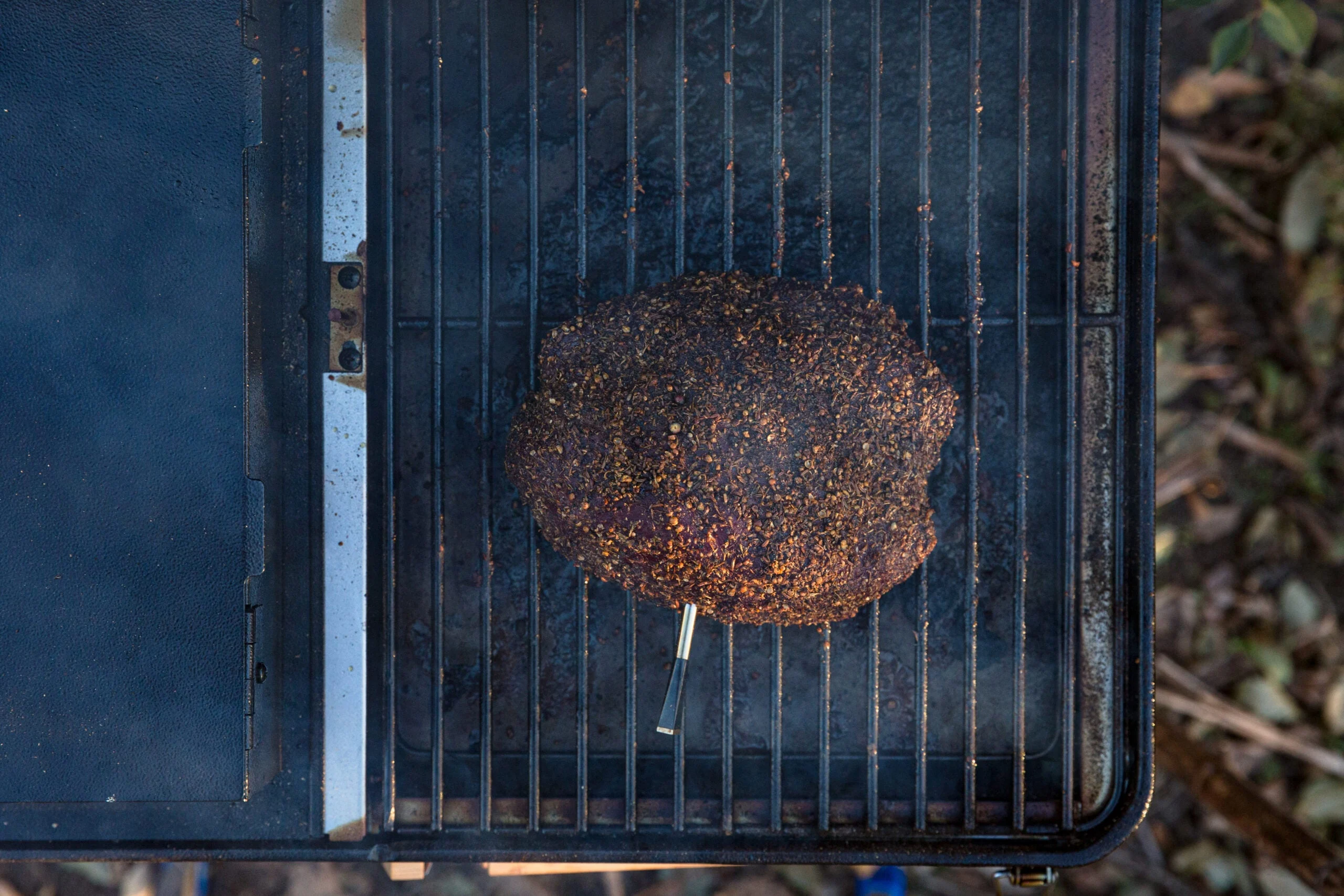
An internal meat probe comes in handy when determining when best to pull the roast. Jack Hennessy
FAQs
What give pastrami its flavor?
The curing process and application of both kosher salt and pink curing salt give pastrami its cured flavor, while aromatic spices rubbed onto the exterior ahead of smoking also contribute to its distinct taste.
Is pastrami cooked or raw?
Pastrami is smoked (and sometimes steamed afterwards) to a fully cooked temperature. When using tougher cuts of meat to make pastrami—such as beef brisket—the final internal temperature can be as high as 205 degrees F.
How long does pastrami last?
When tightly sealed and refrigerated, pastrami will last approximately 2-3 weeks. Once the seal is broken, pastrami will last in the fridge 7-10 days. When tightly sealed and frozen, it will last indefinitely.
Can pastrami be eaten raw?
The raw version of pastrami isn’t technically pastrami. When pastrami is smoked (and potentially steamed), it is no longer raw. But, no, you would not want to eat a chunk of meat that has only been cured with kosher salt and pink curing salt. However, yes, you can eat pastrami (that was smoked and potentially steamed) cold.

